FS Colour Series: Dulse inspired by Anish Kapoor’s Primordial Red
Deep, dark and indulgent, DULSE linen’s blackberry stained hue can invoke both the theatrical grandeur of royalty and the hidden depths of primordial desire. The colour has great significance for British sculptor Anish Kapoor, whose deliciously sensuous sculptures tap in to red’s cultural history, while enlivening a primitive essence within the human body, as writer Stella Paul points out, “For Kapoor, red is the colour of the earth, it’s not a colour of deep space; it’s obviously the colour of blood and the body. I have a feeling that the darkness it reveals is a much deeper darkness than that of blue or black.”
Born in 1954 in Mumbai, India, Kapoor left his hometown to hitchhike across Europe as a teenager, before deciding to study art at Hornsey College of Art in 1973. Initially focussing on performance art, Kapoor expanded into sculpture as he took on postgraduate studies at Chelsea School of Art. Following a period of uncertainty Kapoor returned to India, where he realised the impact Indian society had inadvertently had on his practice, writing, “I suddenly realised all these things I had been making at art school and in my studio had a relationship to what I saw in India. It was a certain attitude to the object. I was making objects that were about doing, about ritual.”
After a prolific three year stint in Mumbai, Kapoor returned to London brimming with ideas about process and materiality, most famously introducing piles of pure pigment in vivid colours into his work to echo the coloured powders piled up outside temples in India. He soon became a prominent member of the New British Sculptors, representing Britain at the 1990 Venice Biennale and winning the Turner Prize in 1991. It was in the 1990s that Kapoor first brought his own dark red wax recipe into his sculptures, creating simple, arresting motifs that are both deeply personal and culturally significant. In the colossal My Red Homeland, 2003, a rotating, mechanical arm moves the soft wax, building it up and flattening it down again as it accumulates around the edges in sticky, congealed mountains resembling heaps of raw meat. Kapoor described the work as a “path to emotional exploration,” with the “red homeland” both a reference to his birthplace in India and as a symbol for embedded emotion and passion, writing “…red is a very Indian colour … it’s one of those things that I grew up with and recognise…”
Past, Present, Future, 2006 also activates coloured wax, with a curved, rotating wedge smearing the weighty, sticky material into a juicy, solid dome of deep red resembling a blackberry pudding. Wax accumulates in smudgy, squishy streaks and stains of crimson which leap out against the pristine white walls of the gallery, revealing the truly messy, hands-on process that making art can be. The vastly proportioned Svayambh, 2007, Sanskrit for “self-generated”, took these ideas several giant leaps forward as a giant train of sticky, raspberry stained wax weighing more than 40 tonnes was set up to travel between five rooms of London’s Royal Academy along a giant track, leaving a gloriously messy trail of residue in its wake.
If there is an undercurrent of violence hinted at in these works, Shooting into the Corner, 2008-2013, brings such ideas to the fore as red wax is fired from an air powered canon into the corner of a gallery, building up its own autonomous mass, body and weight against the stark white walls. Resembling meat, blood and innards, the work references both the wider implications of societal violence and the close, primitive process of giving birth at the root of human survival, as Kapoor puts it, “…it is the colour of the interior of our bodies. Red is the centre.”





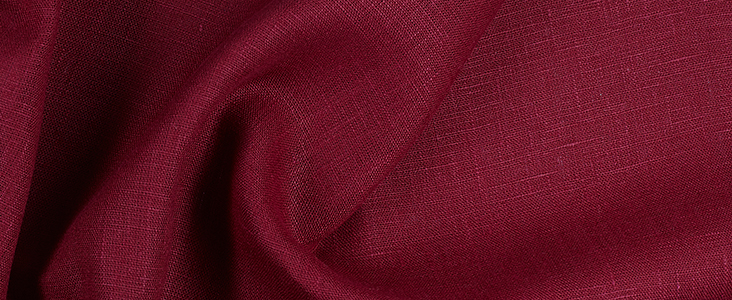
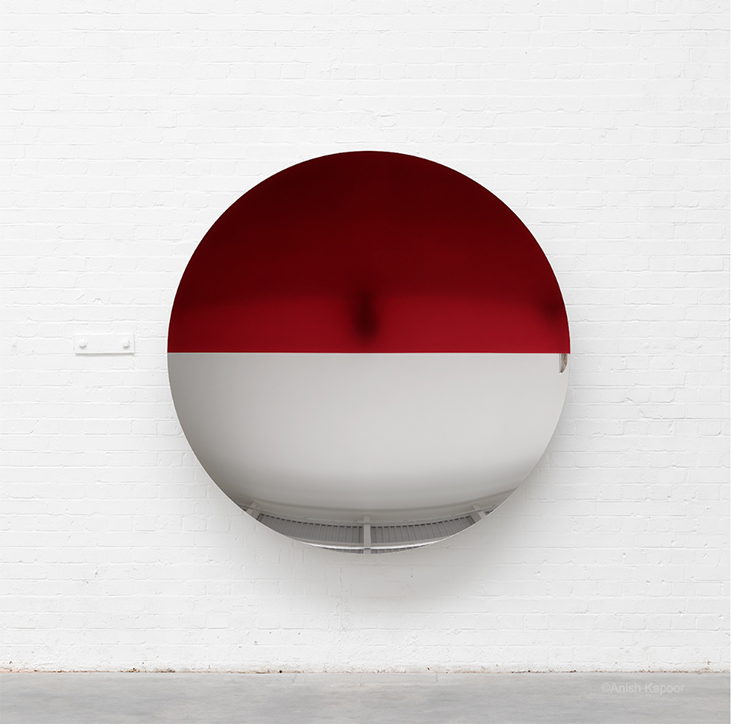
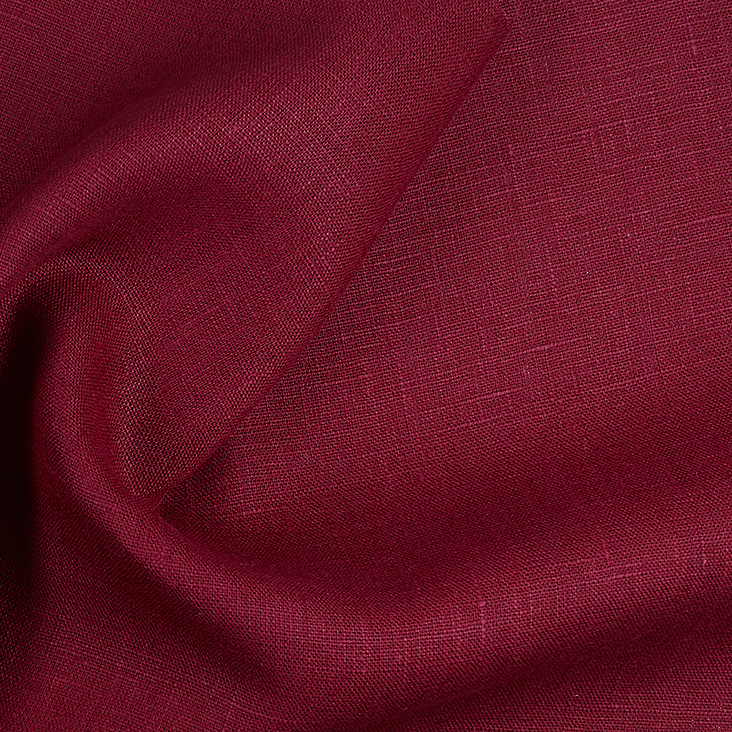
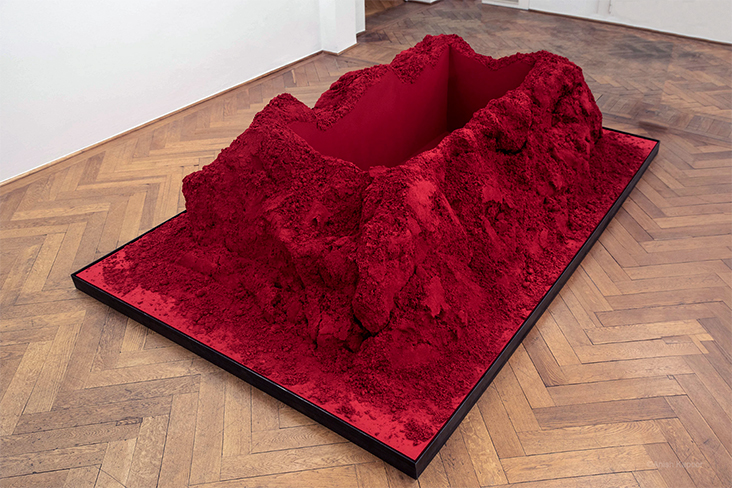
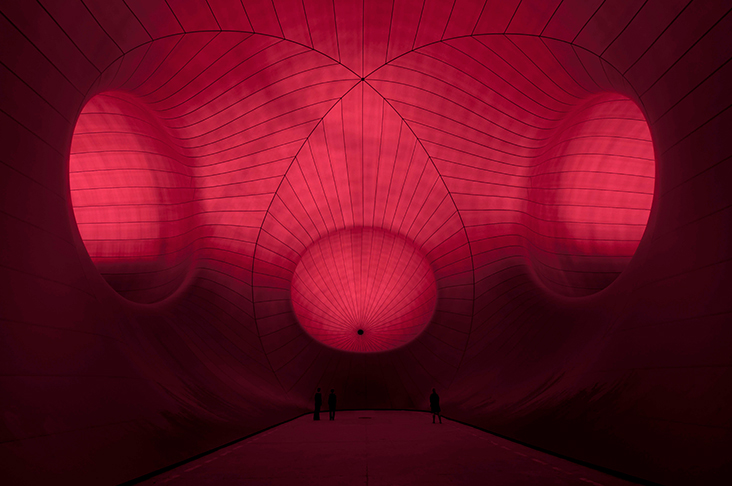

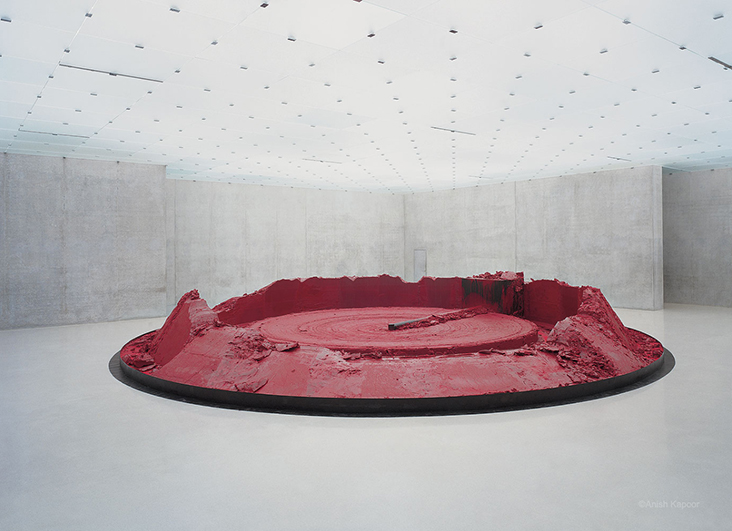




















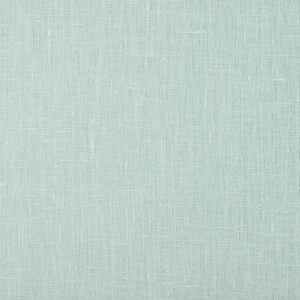


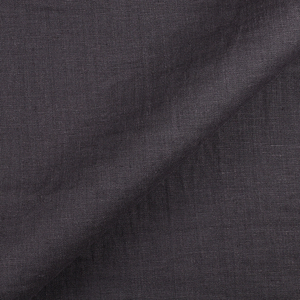



















One Comment
A B
India has been the second highest exporter of beef since the 1960’s. I wonder if the artist grew up around the slaughterhouses?